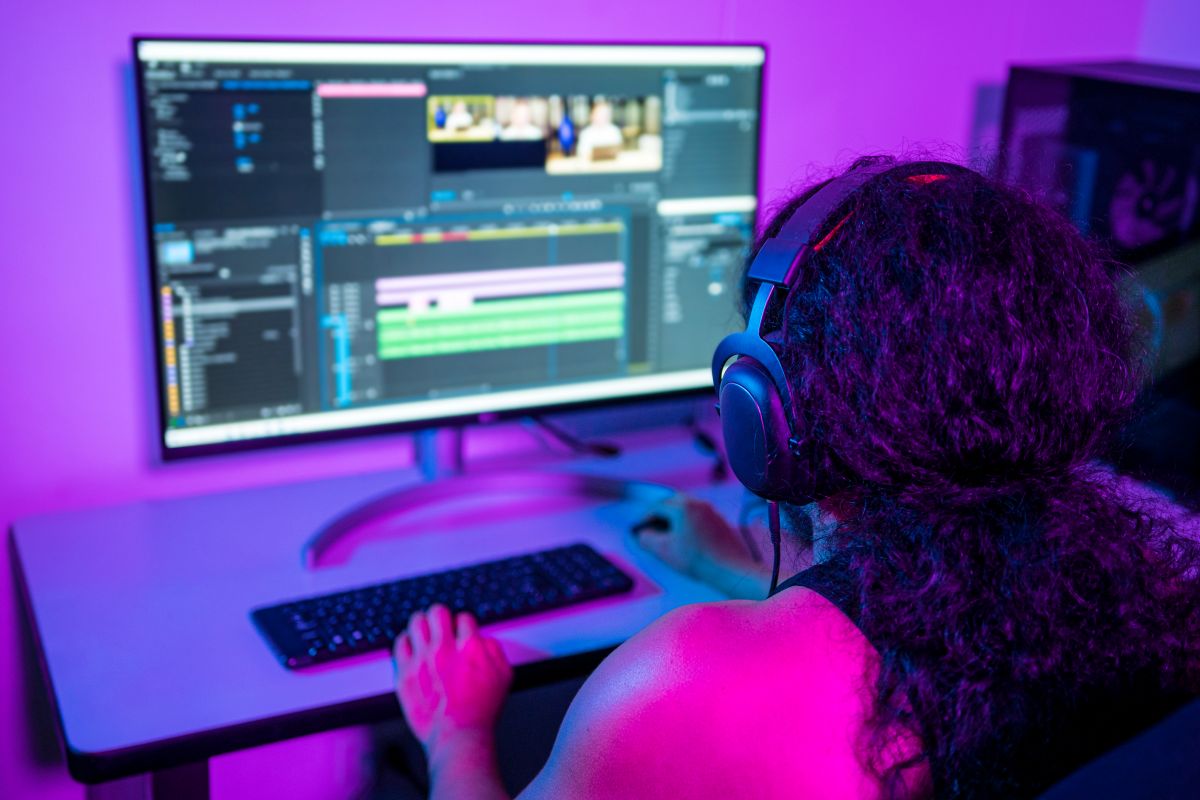
Animation Companies in South Africa Insights: Animation or Live Action
Deciding whether to use live action or animation for your video is far from straightforward. Both formats offer unique qualities, and the choice can shape not only how your message looks and feels but also how much time and money you will invest. The decision often comes down to more than just preference, it is about finding the best fit for your specific goals and resources. The contrast between live action’s realism and animation’s creative freedom raises important questions: Which approach will communicate your message most clearly? Where might one format hold an advantage over the other? Exploring these questions in detail will provide a clearer understanding of each style’s strengths and limitations, helping to guide your choice with confidence. For those looking to collaborate with animation companies in South Africa, this insight also sheds light on what to anticipate during the process and when animation might offer distinct advantages.
What Is Live Action? What Is Animation?
Before we compare the two formats, it helps to clarify what they actually are.
Live Action
Live action refers to video footage recorded with real people, real locations, and physical objects. It involves a production team, actors or presenters, and a location where the filming takes place. This style is widely used in advertising, corporate interviews, documentaries, and events where realism or authenticity is important.
Animation
Animation is created by generating sequences of images that simulate motion. This can be done in a wide variety of styles, from 2D vector-based animation to more complex 3D renders. Animation allows creators to visualise scenarios, ideas, or products that may not be possible to film in real life. It is often used for explainer videos, product demonstrations, instructional content, or any context where flexibility and abstraction are helpful.
Live Action vs Animation: A Detailed Comparison
Let’s take a closer look at the key differences between animation and live action, based on the factors that matter most when deciding which to use.
Production Process
Live Action:
Live action involves multiple physical elements, location scouting, on-site filming, talent coordination, props, lighting, and post-production. While these elements can bring high-quality results, they also involve logistical planning, scheduling challenges, and the possibility of reshoots if something goes wrong.
Animation:
Animation is created digitally. Everything from characters and backgrounds to voiceovers and movement is developed during the post-production phase. This gives you more control over the result, as changes can often be made without reshooting. However, depending on the complexity, the process can take a long time from start to final render.
Creative Freedom
Live Action:
Live action relies on the physical world. While effects and editing can enhance footage, there are limits to what can be filmed convincingly. For brands that want imaginative storytelling, live action may require a larger budget or risk appearing unrealistic.
Animation:
Where animation stands out is in its creative freedom. You are not limited by physical reality, you can visualise abstract concepts, explore futuristic settings, and show scenarios that would be impossible or expensive to film. This is why many animation companies in South Africa are used for product explainers, medical visuals, and tech services that benefit from visual storytelling.
Cost
Live Action:
Live action can be expensive. Costs include locations, equipment, actors, transportation, set design, and crew. For simpler shoots such as training videos or interviews, live action can often be the more affordable option. However, for more complex scenes, costs can escalate quickly.
Animation:
Animation requires time and skill, and the cost can vary widely depending on the style and scope of the project. For some types of content, such as product explainers or visualising abstract ideas, animation can be more affordable because there are no costs for locations, travel, or actors. However, certain animation styles, particularly 3D animation or highly detailed and longer projects, can be more costly than live action. Animation companies in South Africa often reflect this range in pricing, with budgets heavily influenced by the chosen animation style and project complexity.
Time
Live Action:
Live action can be quicker to produce if the project is simple and well-organised. A day of filming and a few days of editing may be all that is needed. But if changes are required after the shoot, rescheduling actors or finding new locations can delay things.
Animation:
Animation generally takes longer to produce. Designing visuals, creating assets, animating scenes, and syncing voiceovers are detailed steps. However, the process can be more consistent, with fewer surprises or delays from external factors.
Realism and Emotional Impact
Live Action:
Live action naturally feels more “real.” It can convey genuine human expressions, authentic settings, and situations that audiences find relatable, making the message more impactful. This makes it ideal for testimonial videos, brand films, or social causes where authenticity matters.
Animation:
Animation may feel less personal, especially when trying to convey real-world issues. While it can be emotive in the right context, it can also seem distant or too abstract for certain audiences, particularly if the goal is to evoke strong human feeling. However, this distance is not always a drawback, it can be quite useful. Animation companies in South Africa often suggest animation to moderate the emotional intensity of sensitive scenes. For instance, in health and safety videos, animation can depict dangerous situations without overwhelming or frightening the audience.
Flexibility During Production
Live Action:
If changes are needed after filming, the options are limited. You may need to reshoot or work around what was already filmed. This can be costly and time-consuming. However, some production companies anticipate these challenges and prepare accordingly. They may use high-quality stock footage to fill gaps or film extra footage during the shoot, such as B-roll, which paired with a voiceover can be a more cost-effective solution than a full reshoot. Since dealing with such issues is common, many companies plan ahead to reduce delays and expenses.
Animation:
Animation is generally easier to revise during production. You can update visuals, edit voiceovers, or adjust timing without needing to redo entire scenes. This flexibility makes animation a practical choice if revisions are anticipated. If the changes are minor, adjustments are usually simpler and less costly than with live action. However, significant revisions can lead to additional costs. Most animation quotes specify how many rounds of revisions are included, and before production begins, animation companies in South Africa typically require client approvals at key stages to help minimise costly changes later on.
Best Use Cases
Live Action:
- Testimonials and interviews
- Corporate culture or office-based stories
- Real-world demonstrations
- Brand films or lifestyle ads
Animation:
- Explainer videos
- Product/service overviews
- Educational content
- Tech, SaaS, or abstract processes
- Health and safety accident recreations
Pros and Cons
Pros of Live Action
- More relatable for viewers
- Strong emotional connection
- Suitable for testimonials and real scenarios
- Quicker for simple productions
Cons of Live Action
- Higher costs for complex projects
- Less control once filming is complete
- Weather, location, and actors can introduce delays
- Limited visual flexibility
Pros of Animation
- Complete creative control
- Effective for complex or abstract ideas
- Cost-effective for certain content types
- Easy to update or repurpose
Cons of Animation
- Time-consuming to produce
- Depends on animator’s skill
- Can lack realism or emotional depth
- May not suit serious or grounded topics
Live Action vs Animation: Quick Comparison Table
Below is a summary of the key differences. This table is intended as a quick reference, especially helpful for teams comparing formats during project planning.
| Feature | Live Action | Animation |
|---|---|---|
| Production Time | Faster for simple shoots | Longer due to design and animation |
| Cost | Higher for complex scenes | Often more affordable |
| Creative Freedom | Limited to real-world possibilities | Unlimited |
| Flexibility | Low (re-shoots needed) | High (easy to edit) |
| Realism | High | Low to moderate |
| Emotional Connection | Strong | Varies based on style |
| Best For | Testimonials, ads, interviews | Explainers, abstract concepts |
Choosing the Right Style for Your Project
There is no universal answer. The choice between animation and live action depends on your specific needs. Here are some questions to guide your decision:
- What is the main message of your video?
- Do you need realism, or is imagination more important?
- What is your timeline and budget?
- Will your audience respond better to real people or visual explanation?
- Do you expect changes or updates later?
- What resources are already available to you?
If you need to explain a product, visualise a process, or keep costs low, animation may be the better choice, and animation companies in South Africa offer a growing talent base with access to global-quality production at more affordable rates. If you need storytelling, authenticity, or real people to speak for your brand, live action might serve you better.
It is important to thoroughly vet the companies you are considering, as some animation companies also specialise in live action, and some live-action focused companies offer animation services. They might even recommend a hybrid approach, combining both styles. In many cases, mixing live action with animation can create a more effective video, so why choose one when you can have both?
Making the Right Choice
The choice between animation and live action often comes down to more than budget or aesthetics. It reflects how you want your audience to engage with your content and what kind of response you hope to evoke. Animation can distance or soften difficult topics, making complex ideas accessible without overwhelming the viewer. Live action, by contrast, invites viewers into a familiar reality that can nurture trust and immediate recognition.
Neither format is inherently superior. The nuanced interplay between emotional tone, clarity, and practical constraints means the “best” option is rarely clear-cut. Sometimes, the most effective solution lies in combining the strengths of both, using animation to illustrate what cannot be captured on film, and live action to ground the story in human experience.
For those exploring animation companies in South Africa, understanding this subtle balance will help set realistic expectations about what animation can, and cannot, achieve within your project’s scope. Beyond the technical and financial details, the deeper consideration is how each medium shapes the viewer’s perception and understanding of your message. That is where the real difference lies.
Whether it’s animation, live action, or a bit of both, getting the right team on board is key. When you’re ready to explore your options, reach out to Sound Idea Digital and let’s start planning your project.
We are a full-service Web Development and Content Production Agency in Gauteng specialising in Video Production, Animation, eLearning Content Development, Learning Management Systems, and Content Production.
Contact us for a quote. | enquiries@soundidea.co.za | https://www.soundideavideoproduction.co.za| +27 82 491 5824 |
More Insights on Animation and Film
If you want to build on what you’ve read here, these articles offer practical explanations: how 3D animation works, the role animation plays within live-action movies (often without you noticing), and a clear guide to the entire animation process, from pre-production to final delivery.
Animation Companies South Africa: How 3D Animation Works
South Africa Animation Studio: Animation Meets Live-Action
Animation Company South Africa: Pre-production To Final Delivery

